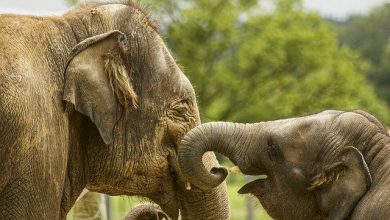At least 65 animal species can laugh: what is its function?

Researchers at the University of California recently mapped out which animal species produce laughing sounds while playing. And that turns out to be a lot: at least 65 animal species can laugh, including great apes, cows, foxes, and three bird species.
Their review study, which the American researchers published in the journal Bioacoustics, shows that most animal species laugh softly and unobtrusively, with the exception of a few, including humans, the seal, and the New Zealand parrot. Laughing, howling, and roaring in the animal kingdom: what does this say about the evolution and function of this expression of emotions?
Human laughter is often rhythmic and accompanied by rapid breathing or panting. This is very similar to the gasping sounds of great apes during romps. When a caretaker tickles a monkey, he will pant or chuckle.
Sometimes there is a grunting sound behind it. With his laughing sounds, the monkey lets you know that he likes playing and that he wants to continue. He is panting because he wants to show that he is showing off, a sign that he is investing in the relationship, and hopes that his playmate will continue to invest by continuing to frolic and tickle.
Parrots
Also in the New Zealand parrot, laughter acts as a signal that they enjoy playing. When two parrots hear the loud whistling laugh of a species on a tape, they immediately start playing with each other. They chase each other and flap their wings. To an outsider, it looks like the two are yelling at each other, but peers recognize it as cheerful laughter.

“That makes it clear that laughter has a function. The laughing sounds indicate that their behavior is not intended to be aggressive but playful. That’s important to communicate to other people of the same species,” said Sasha Winkler, lead author of the study.
Unlike the parrot, most animals keep their laughter sounds soft and subdued. With this, they want to reach their peers but avoid attracting the attention of predators. Rats sniffing each other want to start a playful wrestling match, making short, high-pitched beeps. People often cannot even perceive this beeping.
As long as the rats hear each other so that the playful wrestling match doesn’t turn into a fight because one of the two animals doesn’t understand the friendly intentions of the other.
From experiments with rats, it appears that when one of the two rats, no sound can cripple by operational vocal cords, the rats by playing a shorter time than when both can squeak. A similar phenomenon can be seen in humans, where a conversation lasts longer if the interlocutors are having fun with each other.




